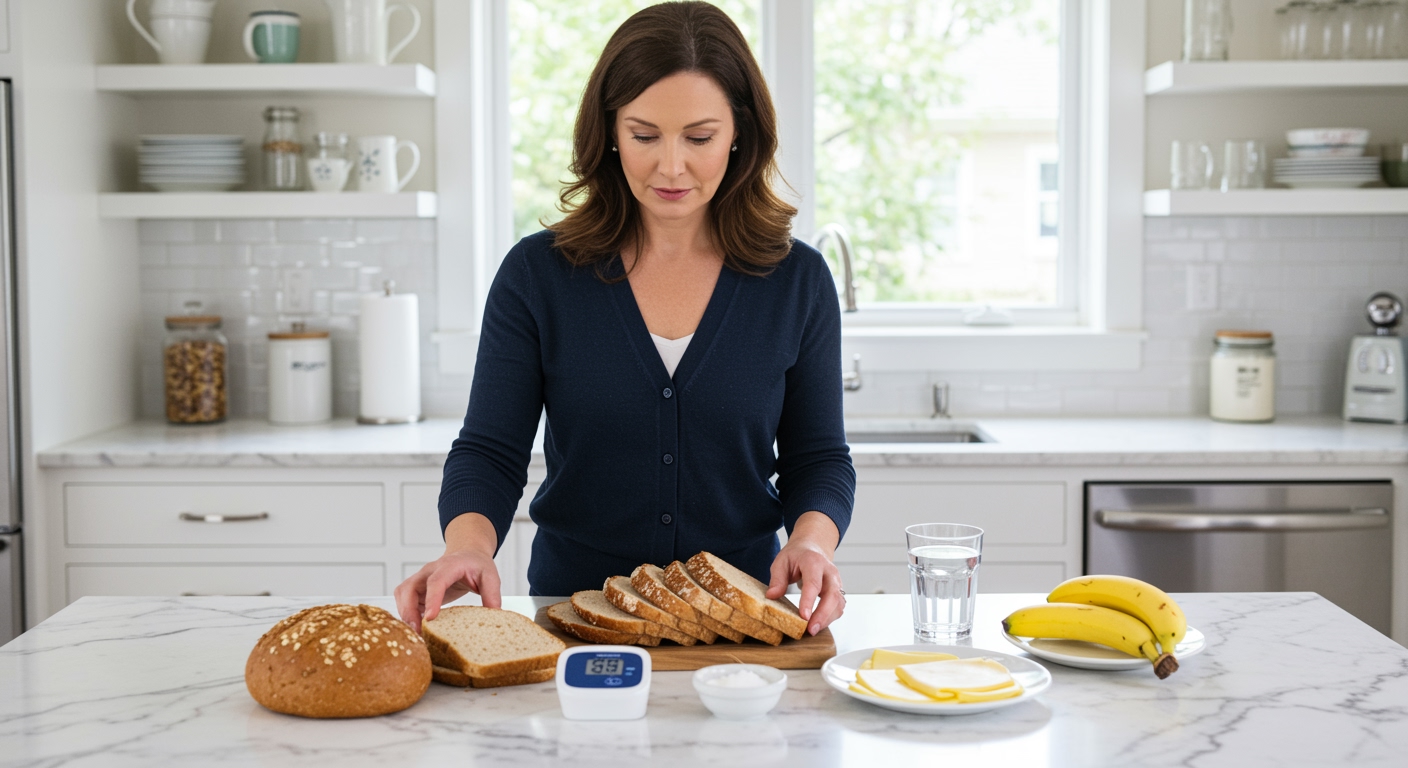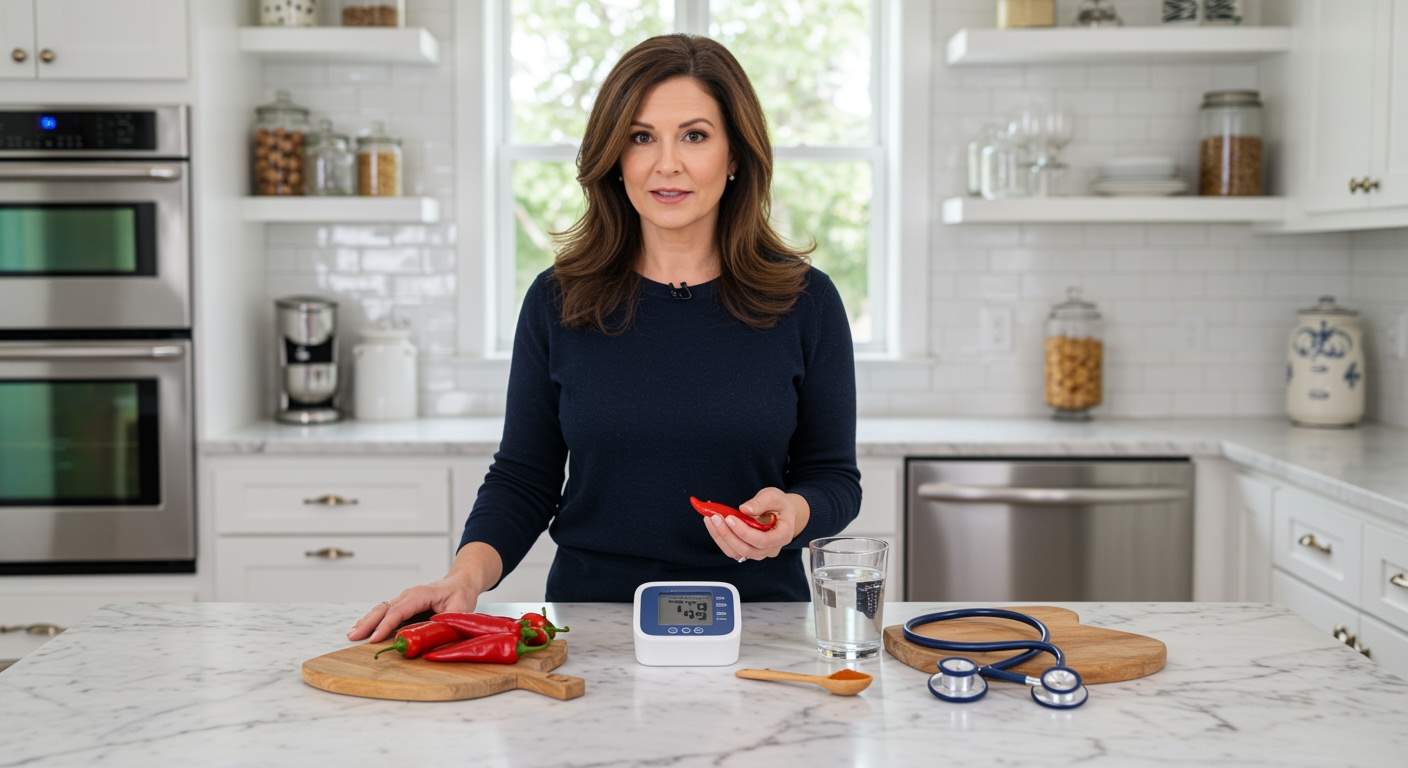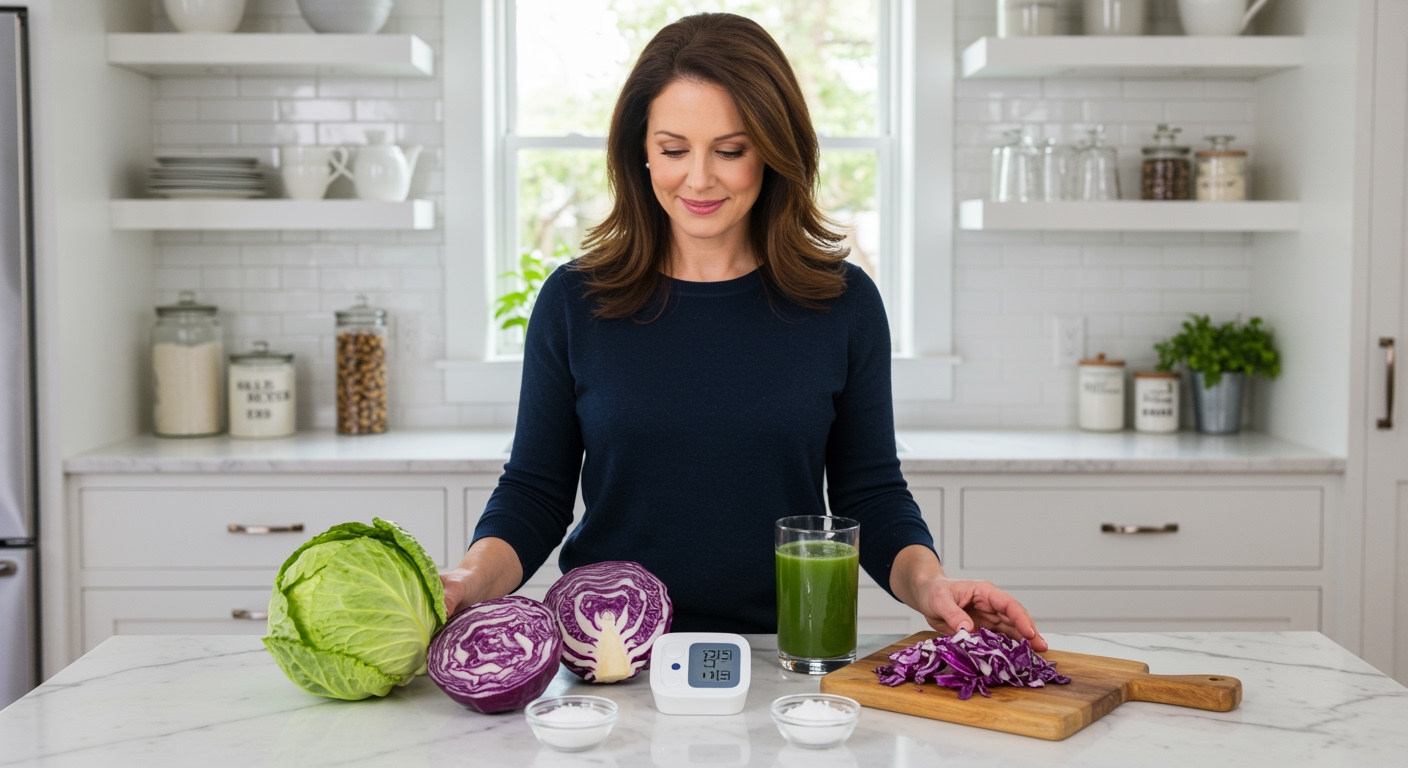✪ Key Takeaway: Whole grain bread can help low blood pressure by providing B vitamins and complex carbs that support circulation.
Introduction
Your doctor just told you that your blood pressure is too low, and now you wonder if that slice of bread on your plate will help or hurt.
You might be asking this question because low blood pressure can make you feel dizzy, tired, and weak throughout the day.
Hi, I am Abdur, your nutrition coach, and today I am going to explain how different types of bread affect your blood pressure and which ones can actually help raise it to healthy levels.
How Does Bread Affect Blood Pressure?
Bread affects your blood pressure through multiple pathways in your body.
When you eat bread, your body breaks down the carbohydrates into glucose, which enters your bloodstream and provides energy to your cells.
This process triggers your pancreas to release insulin, a hormone that helps your cells absorb the glucose from your blood.
The type of bread you choose makes a huge difference in how your body responds.
Refined white bread causes a rapid spike in blood sugar, followed by a quick drop that can worsen low blood pressure symptoms.
Whole grain bread provides a more steady release of glucose, which helps maintain consistent energy levels and supports better circulation.
The sodium content in bread also plays a role, as people with low blood pressure often need slightly more sodium to help their body retain fluid and maintain adequate blood volume.
✪ Pro Tip: Check bread labels for sodium content, as most commercial breads contain 150-300mg per slice.
Which Types of Bread Help Low Blood Pressure?
Not all breads are created equal when it comes to supporting healthy blood pressure levels.
Whole grain breads contain B vitamins, particularly B1, B6, and folate, which support proper nerve function and help your heart pump blood more effectively.
These vitamins work together to support your cardiovascular system by helping your body produce red blood cells and maintain healthy blood vessel function.
Rye bread and pumpernickel bread are excellent choices because they contain more fiber and nutrients than regular white bread.
The fiber in these breads helps slow down digestion, preventing the blood sugar crashes that can make low blood pressure symptoms worse.
Sourdough bread made from whole grains offers another benefit because the fermentation process breaks down some of the starches, making the nutrients more available to your body.
Breads with added seeds and nuts provide healthy fats and protein that help stabilize blood sugar and support steady energy levels throughout the day.
✪ Fact: Whole grain breads contain up to 4 times more B vitamins than refined white bread.
Should You Avoid White Bread With Low Blood Pressure?
White bread is not necessarily harmful for people with low blood pressure, but it is not the best choice either.
The main problem with white bread is that it causes rapid fluctuations in blood sugar levels.
When your blood sugar spikes quickly and then crashes, it can trigger symptoms like dizziness, fatigue, and weakness that mimic or worsen low blood pressure symptoms.
White bread also lacks the essential nutrients that your cardiovascular system needs to function properly.
The refining process removes most of the B vitamins, fiber, and minerals that help support healthy circulation.
However, if white bread is your only option, you can make it work better for low blood pressure by pairing it with protein and healthy fats.
Adding peanut butter, cheese, or avocado to white bread helps slow down the absorption of carbohydrates and prevents the blood sugar roller coaster that can worsen your symptoms.
✪ Note: Pairing white bread with protein can reduce blood sugar spikes by up to 50%.
How Much Bread Should You Eat for Low Blood Pressure?
The amount of bread that helps with low blood pressure depends on your overall diet and individual needs.
Most people with low blood pressure benefit from eating 2-3 slices of whole grain bread per day as part of a balanced diet.
This amount provides enough complex carbohydrates to support steady energy levels without causing excessive blood sugar fluctuations.
The key is to spread your bread consumption throughout the day rather than eating it all at once.
Having one slice with breakfast, one with lunch, and one with dinner helps maintain consistent blood sugar levels and supports better circulation.
Pay attention to how your body responds to different amounts and types of bread.
Some people with low blood pressure find that they feel better with slightly more carbohydrates, while others do better with smaller portions paired with protein and vegetables.
✪ Pro Tip: Track your blood pressure readings and energy levels to find your optimal bread intake.
What Should You Eat With Bread for Better Results?
Combining bread with the right foods can maximize its benefits for low blood pressure.
Protein sources like eggs, cheese, lean meats, or nut butters help stabilize blood sugar and provide amino acids that support healthy blood vessel function.
These proteins also help your body maintain adequate blood volume, which is crucial for people with low blood pressure.
Adding healthy fats like avocado, olive oil, or nuts provides essential fatty acids that support cardiovascular health and help your body absorb fat-soluble vitamins.
Vegetables with your bread add fiber, vitamins, and minerals that support overall circulation and heart health.
A small amount of natural salt on your bread or in your meal can also help people with low blood pressure by supporting fluid retention and blood volume.
Consider combinations like whole grain toast with scrambled eggs and a pinch of sea salt, or rye bread with cheese and tomato slices for optimal nutrient balance.
✪ Fact: People with low blood pressure may need 1500-2300mg of sodium daily, higher than standard recommendations.
The Bottom Line
Bread can be beneficial for people with low blood pressure when you choose the right types and eat them as part of a balanced diet.
The best foods are not always the most complicated ones, but the ones that work consistently with your body, and whole grain bread fits this description perfectly for managing low blood pressure.
I would love to hear about your experience with different types of bread and how they affect your blood pressure, so please share your thoughts or questions in the comments section below.
References
At NutritionCrown, we use quality and credible sources to ensure our content is accurate and trustworthy. Below are the sources referenced in creating this article:





